
Nasal congestion and lack of discharge from the nose in children is a frequent occurrence. A similar symptom indicates the presence of a cold. But sometimes the stuffiness of the nose goes without such symptoms as sneezing, mucous discharge, a rise in temperature. This condition causes parents anxiety. Do not delay with treatment, as nasal congestion can cause breathing problems.
Content
- 1 reasons
- 1.1 Colds
- 1.2 bacterial infection and complications
- 1.3 Adenoides
- 1.4 allergic reaction
- 1.5 Cigarette smoke
- 1.6 hormonal disorders
- 1.7 Congenital diseases and nose injuries
- 1.8 Tumors
- 2 Treatment
- 2.1 Room hygiene
- 2.2 Walking outdoors
- 2.3 Abundant drink
- 2.4 Folk remedies
- 2.5 Drops for children
Reasons for
To catch nasal congestion can various factors, with it's not all of them are of a medical nature. This should include environmental and social reasons. Affect the development of nasal congestion may puffiness of the mucosa, concentrated thick mucus or foreign object, which prevents the air from passing normally.
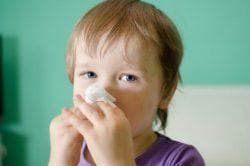
Catarrhal diseases
Rhinitis is the most frequent sign of respiratory illness. Formation of mucus is the result of the immune system on the penetration of the virus into the nasopharynx. In this case, the mucus may be viscous or liquid. The thicker the ripples, the more difficult it is for the baby to breathe. With ARVI, a runny nose lasts about a week. The rhinitis does not require any special treatment, since the mucus production stops immediately after the pathogenic microorganism loses its viability.
Bacterial infection and complications
As a rule, it is secondary. This indicates that she joins after the person has already had ARVI.With weak protective forces of the body and incorrect therapy, different types of sinusitis can be formed. 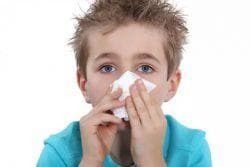
Adenoids
When a severe nasal congestion is observed, this may be a symptom of adenoids. This disease occurs mainly in children 3-7 years old. If the baby has stuffy nose troubles at night, and in daytime breathing is saved, then most likely he has adenoids of the 1st degree.
Allergic reaction
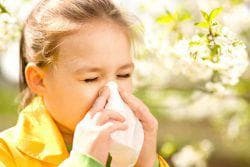
Sometimes nasal congestion is associated with the ingress of an allergen into the body. In this case, the patient still has symptoms such as itching, swelling, constant breathing. Nasal congestion occurs immediately immediately after contact with the allergen has occurred. But the new allocation may be completely absent. Rhinitis of allergic origin can be seasonal and occurs at the time of flowering of certain plants. But there is rhinitis, the development of which affects the home allergens.
This includes household chemicals, hygiene products, pet hair, dyeing clothes. Often, people's nasal congestion is formed against a background of food allergies. The nose is pawned after chocolate, citrus, honey and other highly allergenic foods have been consumed.
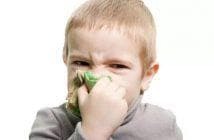 Why scribble in the nose and what tools will help in this issue, is described in this article.
Why scribble in the nose and what tools will help in this issue, is described in this article.
And that's why the nasal congestion in the child does not go away and what means are the most effective, is described in this article.
How is the treatment of folk remedies for edema of the nasal mucosa and how effective is it described in this article: http: //prolor.ru/n/ lechenie-n / otek-slizistoj-nosa.html
And that's why the nasal mucosa is swelling and which remedies are the most effective, is described in great detail inthis article.
Smoke from cigarettes
If you are constantly with a person who regularly smokes, the mucous membranes will be constantly irritated. This especially applies to children. They are strictly forbidden to be with smokers. Passive smoking leads to the development of swelling of the nasal mucosa and bronchial asthma. 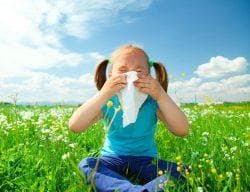
Disorders of the hormonal background
When a person has a hormonal imbalance, the stuffiness of the nose is normal. Most often it occurs in women during pregnancy or in adolescents, when their sexual maturation occurs.
Congenital diseases and injuries of the nose
The curvature of the nasal septum, the obstruction of the nasal passages can affect the development of nasal congestion without a runny nose. Presented pathologies can be both congenital and acquired character.
Tumors
They can have a completely different origin - malignant and benign. Also, the presence of polyps on the nasal mucosa and sinuses makes air passage difficult.
On the video, the child does not breathe a nose:
Treatment
Normalization of nasal breathing can be done at home, but only before this it is necessary to coordinate all your actions with the doctor.
Room hygiene
Make sure that the air in the room is damp and cool. It is recommended to perform wet cleaning, constant airing and elimination of various allergens. Sometimes the recovery comes after the air parameters have been normalized. 
Walking outdoors
If the body temperature is not increased, you can freely go out and get fresh portions of fresh air. The fact is that at this time the edema of the mucosa decreases, the thick mucus thinens, and the breathing of the nose improves. Just make sure that the place for walking is environmentally friendly. It is still not recommended to go out on the streets during severe frosts or during the period of strong flowering of various plants, when the baby has an allergic rhinitis.
Abundant drink
With a cold, this is one of the most important conditions for a successful recovery. If the body lacks water, the nasopharyngeal mucosa will dry up and swell. This leads to the formation of thick mucus and congestion.
Folk remedies
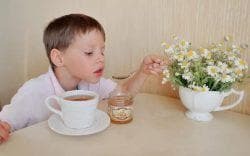
Using non-traditional therapies for nasal congestion in a child, it is necessary to observe some safety measures: age restrictions and the presence of allergies.
In addition, inhalations, warm-ups and other thermal procedures are not permitted at temperatures and bacterial infections. Effective cope with nasal congestion in a child such recipes:
- inhalations using herbs: chamomile, calendula;
- heating with boiled eggs;
- aloe and calanchoe juice, taken in equal amounts for instillation of the nose;
- foot bath with the addition of dry mustard;
- herbal compresses based on chamomile and St. John's wort;
- massage: first, in a circular motion, rub the wings of the nose, and then perform tapping movements.
Drops for children
If already nothing of the above does not have a positive effect, then the children are prescribed vasoconstrictive drops. They, of course, do not cure a runny nose, but are able to cope with the stuffiness. The effect lasts 3-6 hours. Doctors recommend that patients drip such drops before going to bed so that at night the baby can breathe fully. The most effective is:
- Halazoline for children,
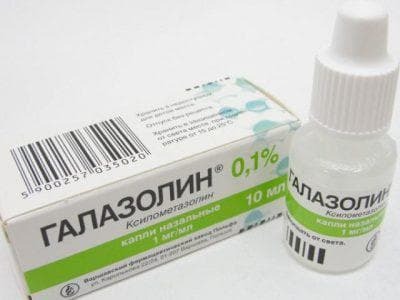
Galazolin
- Vibrocil( and that's what is best used for children Vibrocil or Nazivin, will help understand this article);

Drops Vibrocil
- Baby drops in the nose Otrivin,

Drops Otrivin
- Tizin( and this is the instruction for using a drop in Tysin's nose, this article will help you understand)
- Sanorin,
- Ninazivin baby for babies.
Drip them in accordance with the instructions or prescription of the doctor. Do not exceed the dosage in any case. The duration of application will be 7 days. If you use the drops for a longer time, then you will get addicted and get a positive effect from their application just does not work.
Nasal congestion and the absence of snot is a pathological condition that can be caused by various factors. This includes injuries to the nose, colds, polyps and much more. So before appointing treatment, the doctor should identify the root of the problem. After all, the child's condition can be alleviated only if the underlying factor has been docked.
